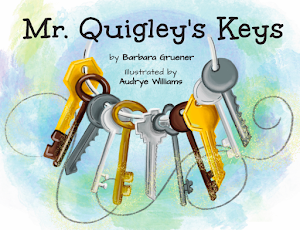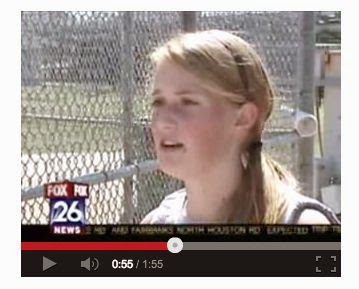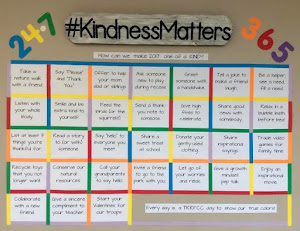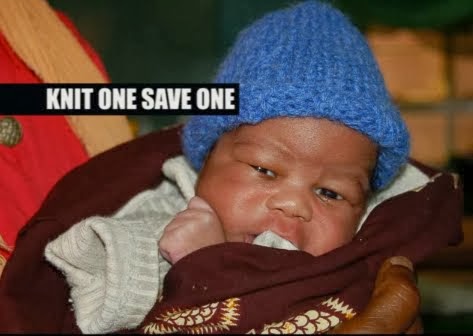Many of you know that I was significantly injured in a car collision nine months ago, but what you don't know is that when I came back, a thoughtful young kindergartener named Savannah made me an amazing offer almost too good pass up and certainly one I'll remember for a very long time.
Working part-time, I was in the middle of our respect lesson when out of the blue that sweetheart said, "Hey, I know. We just bought a new car, so you can have our old one!" Talk about your day maker. I promptly called her mom after class and told her about the generous offer her daughter had made. Sure enough, the mom said, "She's right. We do have an extra car that you could use." WoW!
Working part-time, I was in the middle of our respect lesson when out of the blue that sweetheart said, "Hey, I know. We just bought a new car, so you can have our old one!" Talk about your day maker. I promptly called her mom after class and told her about the generous offer her daughter had made. Sure enough, the mom said, "She's right. We do have an extra car that you could use." WoW!
Today's guest is that little girl's mother with her reflections
on what she's learned about life from the birds.
on what she's learned about life from the birds.
Please welcome Heather Salinas.
***********
***********
Lessons I Learned from the Birds....by Heather Salinas
Protect your young, but know when it's time to let go.
Birds are fiercely protective of their young. The mockingbird is
one of the most aggressive birds when it comes to a nest of her hatchlings. A
nesting mockingbird will stop at nothing to protect her young from potential
predators, large and small. They are often seen "dive-bombing"
uninvited visitors - even predators like hawks, owls and large dogs! Similarly,
the Killdeer have been seen "faking"a broken wing to distract a
potential predator coming too close to a nest. A nesting Killdeer would
willingly sacrifice herself to save her young. I'm sure we can all relate to
this!
Alternately, there comes a time when mother bird instinctively knows nature's clock has chimed and her young must flee the nest. She bravely watches on as her young attempt to fly for the first time. At times, her hatchlings do not make it. As difficult as it is for her to look on, she must let them go into nature and fend for themselves -- become independent. Too many of us try to solve our children's every problem and shield them from disappointment. While I am sure this is with good intention, our children must also learn to become independent and eventually learn to meet their own emotional needs while we are still close by. With young children, it will take much discernment about when to step in. We should calibrate "help" to complement rather than substitute for our child’s efforts.
Eat only what you need.
Birds, unlike the squirrels -- nature's scavengers -- do not store
food for the winter. When spring has arrived and nuts, berries and worms are
plentiful, they happily enjoy nature's buffet, but live in the moment. They do
not take more than they can eat, even to store away in anticipation of winter.
When winter comes, albeit food sources scarce, birds remain transfixed on the
hope that God will provide. How difficult it is for us as humans to do this. So
often we feel that a higher income, bigger home, heftier bonus -- more nuts and
berries -- will make us happier. Enough is never enough.
 |
| Click image for source - Wild Delight site. |
It's ok to stand out.
I often think what a magnificent artist God must be to have
created visual perfection like the painted bunting, roseate spoonbill,
rose-breasted grosbeak, yellow warbler......or any number of birds in breeding
plumage! These birds are beautiful and breathtaking, not because they fit this
mold of perfection, but because they are different and stand out. Ian Wallace,
a children's book author, says, "Why are you trying so hard to fit in,
when you were born to stand out." Has there even been a statement more
true? Each of us, like the magnificent winged creatures, were each born to stand
out. Why fight it?
It's not all about ME.
Look into the sky and you will rarely -- if ever -- see a single
goose. A flock of geese commonly flies in a "V" formation because
this formation serves to distribute the difficulty of travel. The goose at the
center point of the "V" must face the most strain, since it meets the
greatest wind resistance in flight. To account for this, that central position
is rotated every few minutes so that the geese can fly incredible distances
without rest.
 |
| Photo courtesy of NASA |
Furthermore, the least challenging position is at the back of the
"V". This position is reserved for the young, weak or old birds.
Here's the interesting part: If a goose becomes too tired or ill to continue,
it is never left alone or abandoned. The bird will leave the flock with the
assistance of a stronger bird, and remain grounded until it can continue
flight. And the “honking” of geese is believed to be the method of the strong
encouraging the weaker birds to continue! Do we do that? Do we stay back with a
buddy that's having a difficult time, or are we too focused on our own outcome?
If someone we know needs some encouragement, do we go out of our way to
"honk" for that person, or sit back and gossip about it or think
someone else will step up to help?
Author’s Note: My name is Heather Salinas and I thank
you all so much for reading. I have been married for eight years and have
three young children, two dogs, two fish, a bird, soon-to-be eight turtles, and
a yard full of wildlife! I have always had a fascination for nature and all of
God's creatures. I could literally spend hours watching wildlife in its natural
habitat.
I earned a Bachelor of Arts degree from Southwestern University in
2002, and a Master of Science Degree in Journalism from Quinnipiac University
in 2004. I have been an adjunct writing instructor at Alvin Community College
for the past five years, although I am on leave this semester to spend time
with my baby, Crew. I love interacting with my students and giving them an
outlet to tell their stories. Community colleges are extremely diverse and rich
in culture and backgrounds, and it's such a blessing to be able to make a
difference in a student's life :-) On a part-time basis, I also edit court
transcripts for Harris County.
Thank you, Heather! As an interesting connection, two of my brothers have always (to this day ...) called me Bird. I think it's because as a kid, I was always chirping.
















Enjoyed this post very much! Heather, you give us plenty to think about. We have a native plant garden in the courtyard at our school and outside my window I was fascinated last spring by a mother and father killdeer team protecting their nest. They were so protective and of course, our students couldn't get near that area of the garden until the babies went on their way. Once it was time, both of the killdeer parents backed off. I recall counseling a colleague about the need to let one of her own children fly...and wish I had thought to point to the killdeer parents as an example! I also appreciate your take on the geese, and plan to remind my students about the importance of encouragement and support. Mind if I reference your post?! Thanks!
ReplyDeleteHi Lisa! Thank you for reading and for your encouraging comments. What a fascinating story about a family of Killdeer at your school. There is so much we can learn from Mother Nature; unfortunately, we are often too busy to listen. It would be my pleasure to have you reference this post!! :-) Heather
Delete